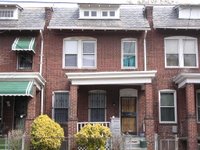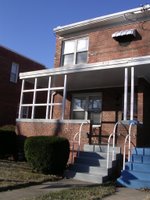I've mentioned here several times that buyers and sellers are still trying to figure this market out. Here's an article from the NY Times that I think truly hits the mark on what I and other agents see happening with real estate these days.
March 4, 2006
Hoping for Best in Home Sales, 2 Sides Sit Tight
By VIKAS BAJAJ and DAVID LEONHARDT
Along much of the East and West Coasts, home buyers and home sellers are engaged in a stare-down. Many buyers, having heard that the real estate market is a bubble in danger of popping, are refusing to offer the asking price on a house, convinced that it will soon drop. But many sellers are not blinking either, thinking that offers will improve when the weather does and biding their time until then. As a result, the housing market is now in a deeply confusing state, with average prices still rising even though homes are taking much longer to sell and the number on the market has soared. Sometime soon - probably in the spring, the peak sales season - one side or the other will have to capitulate, many economists and industry executives predict. "In my opinion, the jury on housing is still out," said Antonio B. Mon, the chief executive of Technical Olympic USA, a home builder. "The period from now until May will tell the tale."Many real estate agents argue that the current slowdown is merely a pause, pointing out that interest rates remain low and that Americans still seem convinced that houses are a great investment. Buyers, on the other hand, are hoping that the rising number of unsold homes is a signal that a slump is coming. It was an early sign of the last housing slump, in the early 1990's.Nationwide, the number of existing homes for sale jumped 36 percent between January 2005 and January of this year, the National Association of Realtors reported Tuesday. In Manhattan, 42 percent more co-ops and condominiums were available for sale at the end of last month than was the case a year ago, according to Miller Samuel, an appraisal company in New York. More Manhattan apartments were on the market in late February than at any point in at least five years.For now, though, average selling prices have continued to rise, even in the markets that had already experienced the biggest leaps in prices and the increases continued even in the final months of last year. Prices rose 40 percent in the Phoenix area during 2005, according to the federal government. In Manhattan, the median price of an apartment was $760,000 at the end of last year, up from $605,000 at the end of 2004.The latest statistics on house prices appear to be dominated by sellers who, for one reason or another, quickly received good offers. That has kept average prices rising. Builders of new homes have also offered bonuses to buyers, like enclosed sunrooms or top-of-the-line appliances. So the builders have been able to continue selling homes without cutting the list prices.But many houses in the Northeast, Florida and California are, in fact, selling for less than they would have six months ago. In parts of the Northeast, the drop has been about 5 percent, estimated Robert I. Toll, chief executive of Toll Brothers, the biggest luxury home builder in the country. Other sellers have cut their price and still not found a buyer. In Buxton, Me., a suburb of Portland, Geof and Cheri Toner put their three-bedroom Cape Cod-style house on the market for $379,900 late last year, shortly before moving to Raleigh, N.C., for Mr. Toner's job. They have received only one offer - for $350,000, which they rejected - and recently reduced the price to $374,900. Mr. Toner said he assumed that more buyers would look at the property as the weather warmed up. In the spring, they would not have to wonder whether snow covered up flaws in the lawn or the roof. He expects that the eventual buyer will be a transplant from elsewhere in New England who is willing to pay significantly more than $350,000. "We're not panicking over it," said Mr. Toner, 48, the regional sales manager of a video equipment maker. "It's just a matter of sitting it out and seeing what happens."
Many real estate agents argue that people like the Toners are doing the right thing and that the market will not slump as it did a decade ago. The job market is now improving. The interest rate on a 30-year fixed rate mortgage remains just 5.79 percent, according to Bankrate.com. And the number of homes on the market remains far lower than in the early 1990's, relative to sales volumes, despite the recent increases.The current slowdown is simply a transition, the agents say, from a scorching hot housing market to a normal, healthy one. "All we are seeing is a pregnant pause," said Richard A. Smith, chief executive of Cendant's real estate division, which owns Coldwell Banker and Century 21, "a disconnect between sellers and buyers."But many buyers say they have a sense that the long boom has finally come to an end.In the San Jose, Calif., area, where the average house price increased 21 percent last year, Sathish Pottavathini, a programmer at eBay, said he was taking his time with the search for a new home and trying to find a good deal. "I don't want to rush into things especially in this kind of situation," Mr. Pottavathini, who is 32, said, "where you hear about a slowing down everywhere." He and his wife, Madhuri, spend $1,200 a month renting an 800-square-foot two-bedroom apartment, where they live with their 21/2-year-old daughter, Siri. They would like to find a three-bedroom town house with a two-car garage for less than $500,000. Although he does not expect prices to fall significantly, he does not think they will rise either and hopes he can find a bargain - a goal that seemed all but impossible in Northern California in the last few years. Now, Mr. Pottavathini said, "If I wait, I might get a better place." Buyers who showed similar patience in the early 1990's were rewarded. From the summer of 1989 to the summer of 1990, the number of homes for sale rose about 10 percent, according to the Realtors association. At first, many sellers refused to accept lower offers, thinking that they would get their asking price or close to it. But they eventually had to unload their houses, and in the Northeast and California that often meant reducing the price. In the Los Angeles area, the median sale price of existing houses fell 22 percent from 1992 to 1996, before taking inflation into account. If a similar slowdown were to happen again, Mr. Toner said he would consider changing his mind and his asking price. "At some point, if this were to become protracted, I would consider lowering the price to attract a buyer," he said. Mr. Pottavathini, meanwhile, is giving his San Jose search four months. After that, he plans to take a break and wait until his daughter is a bit older and his wife returns to work. With more money coming in, they might be able to pay more. If they still have not succeeded, they would then consider leaving Northern California - which he called "the best place in the world" - and returning to their native India. "If the condos become $600,000, it doesn't make any sense to live here," he said. "Imagine owning a house and paying your whole life for that house. I would rather move back to India."
Copyright 2006The New York Times Company



